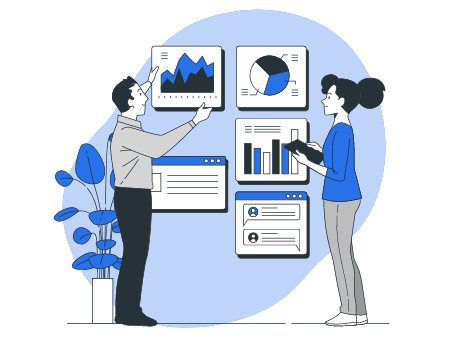Sentiment Analysis for Social Media Comments
Summary: Implement a deep learning model to perform sentiment analysis on social media comments. The model will classify comments as positive, negative, or neutral, enabling businesses to gauge customer sentiments effectively.
Domain: Natural Language Processing (NLP).
Predicting Customer Churn in Telecom Industry
Summary: Leveraging machine learning algorithms, this project predicts customer churn in the telecom industry. By analysing customer behaviour and usage patterns, it helps identify potential churners, allowing businesses to take proactive measures to retain valuable customers. Domain: Customer Analytics, Telecom.
Stock Price Prediction using Time Series Analysis
Summary: Employing time series forecasting techniques and historical stock data, this project predicts future stock prices. It can aid investors and traders in making informed decisions and managing their portfolios effectively.
Domain: Finance, Stock Market.
Image Classification for Medical Diagnostics
Summary: Using deep learning and convolutional neural networks (CNNs), this project aims to classify medical images into different diagnostic categories. It can assist medical professionals in making accurate and timely diagnoses, leading to improved patient outcomes.
Domain: Medical Imaging, Healthcare.
Personalized Movie Recommendation System
Summary: This project builds a recommendation system using collaborative filtering and matrix factorization techniques to suggest movies based on users’ preferences and viewing history. It enhances user experience on streaming platforms and boosts user engagement.
Domain: Recommender Systems, Entertainment.
Crop Yield Prediction for Precision Agriculture
Summary: Leveraging machine learning and historical agricultural data, this project predicts crop yields for different regions and seasons. It aids farmers in optimizing resource allocation and improving overall crop productivity.
Domain: Agriculture, Remote Sensing.
Recommender System for E-commerce
Summary: Implement a personalized recommender system that suggests products to users based on their past behaviour and preferences. This project aims to enhance user engagement and increase sales in e-commerce platforms.
Domain: Recommendation Systems.
Air Quality Prediction
Summary: Develop a machine learning model to predict air quality levels in each area based on historical data and environmental factors. This project aims to provide early warnings for potential air pollution events.
Domain: Environmental Sciences.
Natural Language Generation for Chatbots
Summary: Implement a natural language generation model to improve the conversational abilities of chatbots. The system will generate human-like responses, enhancing user interactions.
Domain: Natural Language Processing (NLP) and Chatbots.
Language Translation using Sequence-to-Sequence Models
Summary: This project involves implementing a sequence-to-sequence model for language translation tasks. By leveraging recurrent neural networks or transformers, the model can translate text from one language to another, facilitating cross-lingual communication in the natural language processing domain.
Climate Change Impact Analysis using Machine Learning
Summary: Build a machine learning model to analyse climate data and predict the potential impact of climate change on specific regions. The project contributes to climate research, environmental planning, and disaster management.
Domain: Environmental Science, Climate Change Analysis

